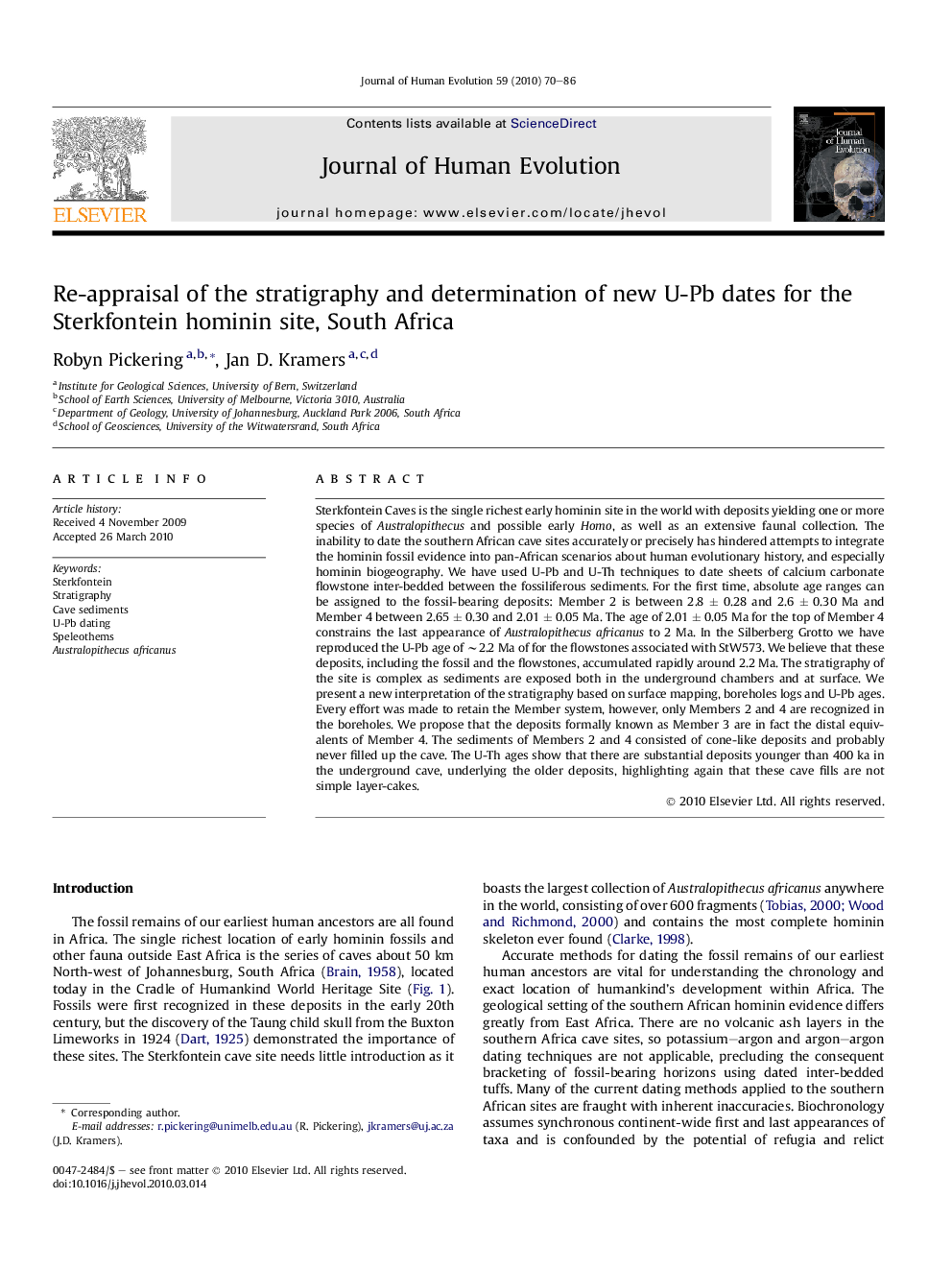| Article ID | Journal | Published Year | Pages | File Type |
|---|---|---|---|---|
| 4556652 | Journal of Human Evolution | 2010 | 17 Pages |
Sterkfontein Caves is the single richest early hominin site in the world with deposits yielding one or more species of Australopithecus and possible early Homo, as well as an extensive faunal collection. The inability to date the southern African cave sites accurately or precisely has hindered attempts to integrate the hominin fossil evidence into pan-African scenarios about human evolutionary history, and especially hominin biogeography. We have used U-Pb and U-Th techniques to date sheets of calcium carbonate flowstone inter-bedded between the fossiliferous sediments. For the first time, absolute age ranges can be assigned to the fossil-bearing deposits: Member 2 is between 2.8 ± 0.28 and 2.6 ± 0.30 Ma and Member 4 between 2.65 ± 0.30 and 2.01 ± 0.05 Ma. The age of 2.01 ± 0.05 Ma for the top of Member 4 constrains the last appearance of Australopithecus africanus to 2 Ma. In the Silberberg Grotto we have reproduced the U-Pb age of ∼2.2 Ma of for the flowstones associated with StW573. We believe that these deposits, including the fossil and the flowstones, accumulated rapidly around 2.2 Ma. The stratigraphy of the site is complex as sediments are exposed both in the underground chambers and at surface. We present a new interpretation of the stratigraphy based on surface mapping, boreholes logs and U-Pb ages. Every effort was made to retain the Member system, however, only Members 2 and 4 are recognized in the boreholes. We propose that the deposits formally known as Member 3 are in fact the distal equivalents of Member 4. The sediments of Members 2 and 4 consisted of cone-like deposits and probably never filled up the cave. The U-Th ages show that there are substantial deposits younger than 400 ka in the underground cave, underlying the older deposits, highlighting again that these cave fills are not simple layer-cakes.
